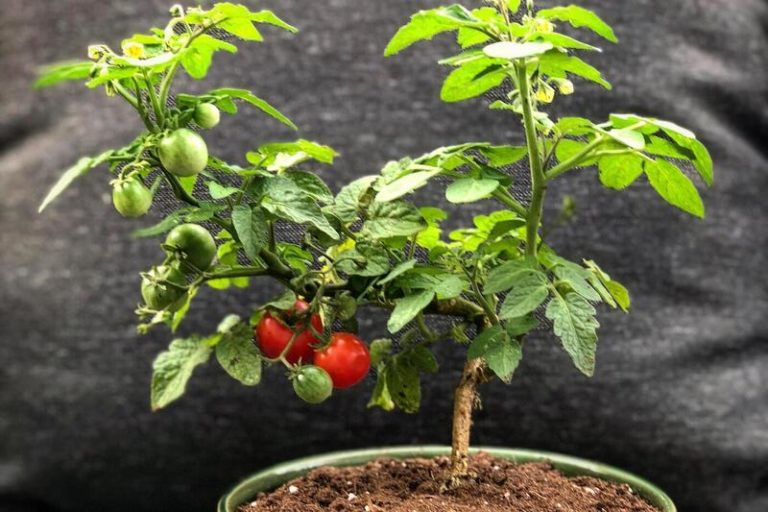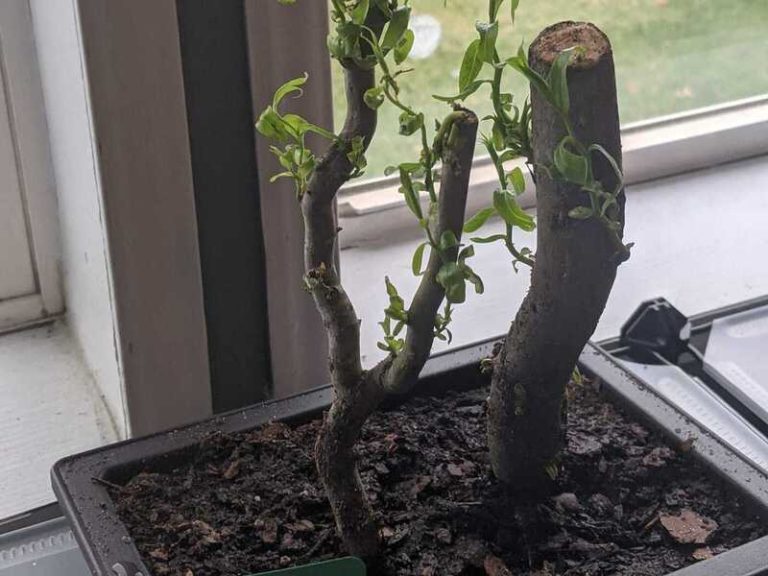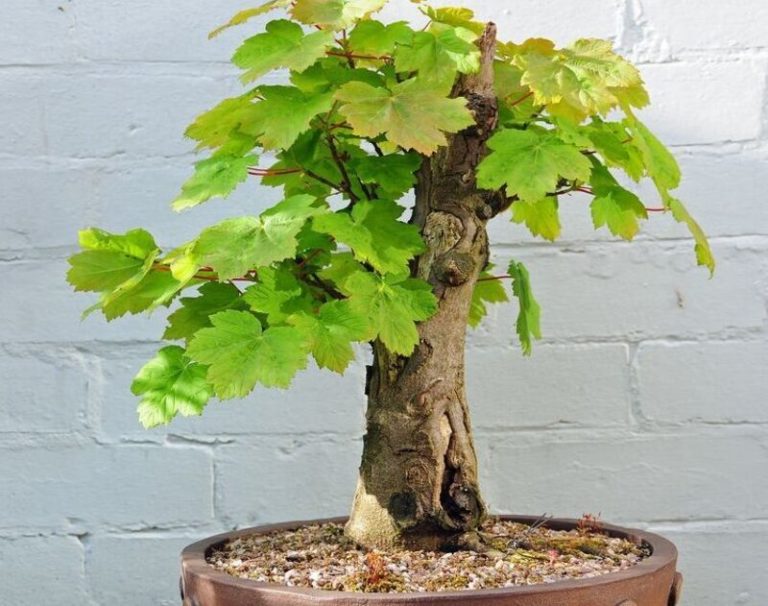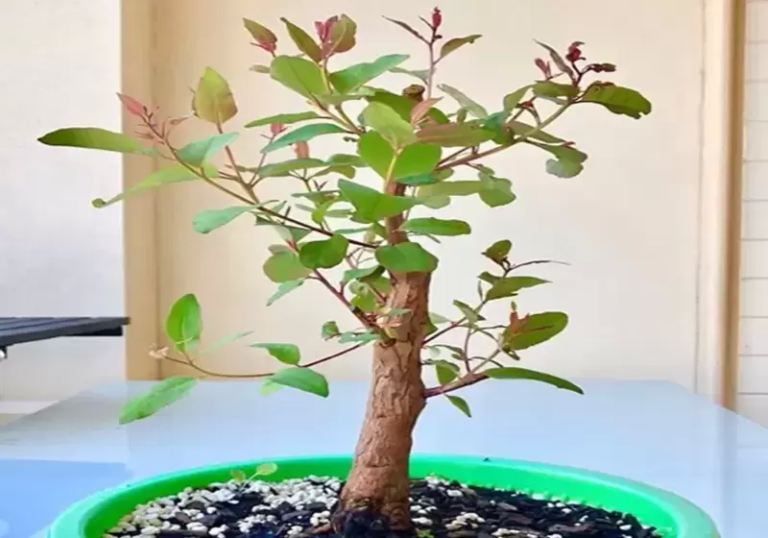California Juniper Bonsai: A Symbol of Resilience and Grace
Bonsai trees have been fascinating gardeners for hundreds of years, and the California juniper bonsai stands out for its unique features and good looks. In this article, we’ll learn about California juniper bonsai and give you easy, useful tips on how to grow and shape these interesting trees.
What is a California Juniper Bonsai?
California Juniper Bonsai refers to the cultivation and shaping of California juniper trees (Juniperus californica) in the art of bonsai. It involves growing these unique trees in miniature form through careful pruning, wiring, and training techniques. California junipers are known for their rugged appearance, twisted branches, and distinctive bark. This species is hardy and can survive in harsh environments. California Juniper Bonsai offers enthusiasts the opportunity to create miniature representations of these trees, capturing their natural beauty and character. Proper care and attention to soil, sunlight, and watering are essential for the health and vitality of these bonsai trees. It is a rewarding and creative practice that allows individuals to bring nature’s beauty into their living spaces or gardens.
History and Origins of the California Juniper Bonsai
The history and origins of California Juniper Bonsai can be traced back to the art of bonsai itself, which originated in China and later gained prominence in Japan. Bonsai, meaning “tray planting” in Japanese, is the practice of growing and training trees in containers to create miniature representations of nature.
Bonsai fans in the southwestern United States appreciate and use local plant species, which is why California juniper trees are often grown as bonsai. The California juniper (Juniperus californica) is a wild tree that grows in dry, rocky places in California, Arizona, and Nevada..
As the art of bonsai spread around the world, fans and artists looked for local tree types to use in their bonsai collections. Bonsai fans in the area were drawn to the California juniper because of its rough beauty and unique qualities. These trees are good for growing bonsai because they have twisted branches, rough bark, and a natural ability to survive in tough settings.
Over time, bonsai artists in California and other parts of the southwestern United States started to focus on growing and styling California junipers as bonsai. They changed the rules and methods of traditional bonsai to fit the unique growing patterns and traits of the California juniper. This is how California Juniper Bonsai became a separate style within the bonsai community.
Today, California Juniper Bonsai continues to evolve and flourish as bonsai enthusiasts and artists refine their techniques and explore new possibilities with this captivating species. It showcases the beauty and resilience of the California juniper while providing a creative outlet for bonsai enthusiasts in the southwestern United States and beyond.

California Juniper Bonsai and Their Symbolism
California Juniper Bonsai, like many other bonsai trees, carries symbolic meaning and significance in various cultural and philosophical contexts. Here are some of the symbols associated with California Juniper Bonsai:
- Resilience: The California juniper is well-known for its capacity to survive in dry and rocky areas. It represents persistence, strength, and adaptation in the face of hardship as a bonsai. It serves as a reminder of the beauty and fortitude that may be discovered in difficult situations.
- Longevity: In general, bonsai is often linked to living a long time and appreciating the passing of time. A California juniper bonsai grows and ages slowly, which shows how important and wise it is to be patient. It shows how time goes by and how beautiful it can be to get older in a gentle way.
- Connection to Nature: Bonsai, like the California Juniper Bonsai, is a way to bring the beauty of nature into our homes. It reminds us of our link to nature and how important it is to care for and protect it. The small image of a California juniper bonsai makes you feel calm, rooted, and appreciative of nature’s beauty.
- Balance and Harmony: Bonsai cultivation requires careful attention to balance and harmony in the tree’s form and composition. A well-styled California juniper bonsai reflects a sense of balance between its branches, foliage, and the container it resides in. This symbolism extends beyond the physical appearance and encourages the pursuit of balance and harmony in our own lives.
- Reflection of the Larger Landscape: With its twisted branches and rough look, the California Juniper Bonsai is a tiny version of the wild landscapes it comes from. It shows the relationship between the small size of the tree and the big size of the surroundings around it. It makes people think about and appreciate the bigger world and their place in it.
Overall, California Juniper Bonsai carries symbolic meaning related to resilience, longevity, connection to nature, balance, and harmony. It serves as a source of inspiration and reflection, inviting individuals to embrace these qualities in their own lives and appreciate the beauty and symbolism of nature.
Characteristics of the California Juniper Bonsai
The California Juniper Bonsai (Juniperus californica) is a compelling choice for bonsai aficionados due to numerous distinguishing qualities. The following are some distinguishing features of the California Juniper Bonsai:
Rugged Appearance: The California Juniper Bonsai is famous for looking rough and old. The bark of the tree looks rough and old, and it often has deep grooves and a reddish-brown color. This roughness gives the bonsai character and makes it more interesting to look at.
Twisted Branches: One of the most notable features of the California Juniper Bonsai is its twisted and contorted branches. These branches give the tree a sense of movement and dynamic energy, creating an intriguing visual display when styled in a bonsai composition.
Compact Size: The California Juniper Bonsai is appropriate for bonsai gardening because to its modest size. Because of its compact growth habit, it is easy to maintain and show in both indoor and outdoor settings.
Evergreen Foliage: As an evergreen species, the California Juniper Bonsai retains its foliage throughout the year. The scale-like leaves are typically gray-green, adding a touch of softness and texture to the overall aesthetic of the bonsai.
Drought Tolerance: California junipers are used to living in dry and desert places, and this toughness carries over to the bonsai form. They are known for being able to survive in dry conditions, which makes them a good choice for bonsai fans who may not be able to water their plants often or who live in areas with dry weather.
Resinous Fragrance: The California Juniper Bonsai emits a resinous fragrance, which can add an extra sensory element to the bonsai experience. The subtle aroma can enhance the overall ambiance and create a more immersive connection to nature.
Longevity: The California Juniper Bonsai may live for many years, perhaps decades, if properly cared for. This longevity allows bonsai aficionados to see the tree’s growth and development throughout time, building a stronger connection and appreciation for the art of bonsai.
The unique combination of ruggedness, twisted branches, compact size, and drought tolerance makes the California Juniper Bonsai an intriguing choice for bonsai enthusiasts. Its characteristics provide ample opportunities for creative styling and artistic expression, while its resilience ensures long-term enjoyment of this captivating tree.
Types of California Juniper Bonsai
There are several varieties and variants of California Juniper Bonsai (Juniperus californica) that offer distinct traits and visual appeal. Here are a few prominent California Juniper Bonsai varieties:
1. ‘Sierra’ Juniper (Juniperus californica ‘Sierra’): This type of California Juniper Bonsai is known for its compact growth habit and dense foliage. It typically features twisted branches with a rugged appearance, making it a popular choice for bonsai enthusiasts.
2. ‘Canyon Grey’ Juniper (Juniperus californica ‘Canyon Grey’): This variety of California Juniper Bonsai is recognized for its striking grayish-blue foliage. The foliage color adds a unique element to the bonsai’s aesthetic and creates a captivating contrast with its twisted branches.
3. ‘Nana’ Juniper (Juniperus californica ‘Nana’): The ‘Nana’ variety is a dwarf form of California Juniper Bonsai. It has a compact and rounded growth habit, making it ideal for smaller bonsai compositions or limited space. Its dense foliage and twisted branches contribute to its charm.
4. ‘Prostrata’ Juniper (Juniperus californica ‘Prostrata’): This type of California Juniper Bonsai is known for its low-growing and spreading form. The branches tend to grow horizontally, creating a visually interesting cascading or semi-cascading bonsai style. It is often used for creating dynamic and ground-hugging compositions.
5. ‘Valley Carpenteria’ Juniper (Juniperus californica ‘Valley Carpenteria’): This variety exhibits unique blue-gray foliage and an overall graceful appearance. It showcases delicate and fine branches, adding an elegant touch to the California Juniper Bonsai collection.
These are only a few examples of California Juniper Bonsai that bonsai enthusiasts can experiment with. Each kind has its own particular features, such as foliage color, growth habit, and branch structure, allowing for a wide spectrum of creative and aesthetic expression in bonsai style.
How to Grow a California Juniper Bonsai
Growing a California Juniper Bonsai (Juniperus californica) necessitates paying close attention to its unique requirements and growth procedures. Here’s how to develop a California Juniper Bonsai step by step:
Selecting a Healthy Tree:
- Choose a young California juniper tree that is suitable for bonsai cultivation. Look for a tree with healthy foliage, well-developed branches, and a strong root system.
Choosing the Right Container and Soil:
- Select a bonsai container that is appropriate for the size and style of your California Juniper Bonsai. Ensure that the container has adequate drainage holes to prevent waterlogging.
- Use a well-draining bonsai soil mix that consists of a blend of organic and inorganic materials. This type of soil promotes good airflow and prevents water from accumulating around the roots.
Pruning and Styling:
- Begin by pruning the branches and foliage of the juniper bonsai to achieve the desired shape and structure. Trim any dead or unhealthy branches and remove excessive foliage to encourage airflow and sunlight penetration.
- Use bonsai wire to gently shape and position the branches into the desired form. Be cautious not to bend the branches too forcefully to avoid damaging them.
Placement and Sunlight:
- Position your California Juniper Bonsai in a location that receives ample sunlight. Junipers thrive in bright and sunny conditions, but protection from scorching afternoon sun during hot summers is important.
- Consider placing the bonsai outdoors during favorable weather conditions, as the juniper benefits from exposure to the natural elements.
Watering and Moisture:
- Water your California Juniper Bonsai thoroughly, but avoid overwatering. Allow the top layer of soil to dry out slightly before watering again.
- Utilize the “soak and dry” technique: Water the bonsai until water drains from the bottom of the container, and then allow the soil to dry out before the next irrigation. Adjust the frequency according to the climate and season.
Fertilization:
- Feed your California Juniper Bonsai with a balanced, slow-release bonsai fertilizer during the growing season. Follow the instructions on the fertilizer package for proper application and dosage. This provides essential nutrients for healthy growth.
Winter Care:
- Protect your juniper bonsai from freezing temperatures during the winter. Move it to a sheltered location or provide insulation with mulch or a protective cover to prevent cold damage.
Regular Maintenance:
- Monitor your bonsai for pests and diseases regularly. If any issues arise, take appropriate measures to address them promptly.
- Regularly prune and trim your California Juniper Bonsai to maintain its desired shape and prevent excessive growth.
By following these recommendations and giving adequate care, you may create a healthy and thriving California Juniper Bonsai that will add beauty and peace to your bonsai collection. Remember that bonsai development needs patience and consistent attention, but the results are well worth the effort.
Benefits of the California Juniper Bonsai
The California Juniper Bonsai (Juniperus californica) has various advantages for bonsai lovers and those who admire its distinct beauty. Here are some of the primary advantages of growing a California Juniper Bonsai:
- Aesthetic Appeal: The California Juniper Bonsai showcases a rugged and weathered appearance with twisted branches and distinctive bark. Its unique characteristics make it visually captivating and add a touch of wild and natural beauty to any bonsai collection or garden.
- Resilience and Adaptability: California junipers are hardy trees that have evolved to withstand harsh conditions in arid and rocky landscapes. When grown as bonsai, they exemplify resilience and adaptability. This makes them suitable for bonsai enthusiasts living in drier climates or those seeking a tree that can withstand challenging environmental conditions.
- Symbolic Meaning: The California Juniper Bonsai, like other bonsai trees, has symbolic importance. Its twisted branches and craggy look can represent strength, tenacity, and the beauty of hardship. It serves as a reminder of the natural world’s ability to survive and thrive in adverse conditions.
- Meditative and Therapeutic Benefits: Caring for a California Juniper Bonsai offers a therapeutic and meditative experience. Engaging with the tree through pruning, wiring, and nurturing activities can provide a sense of relaxation, mindfulness, and connection with nature. It offers an escape from daily stresses and promotes a calming and peaceful atmosphere.
- Educational Opportunity: Cultivating a California Juniper Bonsai provides an opportunity to learn about the species’ natural history, growth patterns, and horticultural practices. It allows bonsai enthusiasts to develop their knowledge and skills in bonsai cultivation, tree shaping, and artistic expression.
- Space Flexibility: Because of its small size, the California Juniper Bonsai is suited for a variety of living situations. It may be cultivated both indoors and outdoors, giving it a versatile option for individuals with limited garden space or who live in flats or cities.
- Longevity: A California Juniper Bonsai can live for many years, even decades, if properly cared for. This allows you to see the tree’s growth and development throughout time, generating a sense of connection and appreciation for the passage of time and the art of bonsai.
The California Juniper Bonsai combines visual allure, symbolic significance, and therapeutic benefits, making it a rewarding and fulfilling choice for bonsai enthusiasts. It allows individuals to express their creativity, connect with nature, and enjoy the beauty and tranquility that bonsai cultivation offers.
Displaying and Showcasing the California Juniper Bonsai
Displaying and showcasing the California Juniper Bonsai (Juniperus californica) can be a delightful way to share its beauty and unique characteristics with others. Here are some tips for effectively displaying and showcasing your California Juniper Bonsai:
1. Bonsai Stands and Tables: Consider placing your California Juniper Bonsai on a bonsai stand or table. These elevated platforms not only provide a stable base for your bonsai but also elevate it to eye level, allowing viewers to appreciate its intricate details and craftsmanship.
2. Accentuating Containers: Choose an appropriate bonsai container that complements the style and aesthetics of your California Juniper Bonsai. The container should be proportionate to the size of the bonsai and enhance its overall presentation. Earthy tones and natural materials often work well with the rugged and organic nature of the juniper.
3. Group Displays: Creating a bonsai display with multiple California Juniper Bonsai trees can add depth and visual interest. Consider arranging bonsai trees of varying heights, shapes, and styles to create a harmonious composition. Group displays can evoke a sense of a natural landscape or a miniature forest, enhancing the overall impact of the display.
4. Standout Features: Highlight the unique characteristics of your California Juniper Bonsai. Arrange the tree in such a way that its twisted branches, rugged bark, or distinct foliage become focal points. Use careful pruning and branch positioning to enhance these standout features and create a visually appealing presentation.
5. Lighting Considerations: Adequate lighting can enhance the visual impact of your California Juniper Bonsai display. Natural sunlight is ideal, but if placing the bonsai indoors, position it near a well-lit window. Consider using spotlighting or accent lighting to highlight specific areas or angles of the bonsai, creating a captivating play of light and shadows.
6. Exhibitions and Shows: Participating in bonsai exhibitions or shows is an excellent way to showcase your California Juniper Bonsai to a wider audience. Follow exhibition guidelines and standards to present your bonsai in its best form. It provides an opportunity to connect with other bonsai enthusiasts, gain feedback, and share your passion for bonsai.
7. Educational Signage: Consider adding educational signage or a small placard near your California Juniper Bonsai display. Provide information about the species, its unique characteristics, and any noteworthy aspects of its cultivation or styling. This helps educate viewers and adds depth to their appreciation of the bonsai.
Remember to regularly maintain and care for your California Juniper Bonsai to ensure its health and vitality, as a well-maintained bonsai is more likely to captivate and impress viewers. Whether it’s in your home, a bonsai exhibition, or a public display, showcasing your California Juniper Bonsai allows others to experience its beauty and the artistry of bonsai cultivation.

Styling and Design of a California Juniper Bonsai
Styling and designing a California Juniper Bonsai (Juniperus californica) involves careful consideration of the tree’s unique characteristics and artistic vision. Here are some key aspects to keep in mind when styling and designing your California Juniper Bonsai:
Natural Form: The California Juniper Bonsai is known for its rugged and weathered appearance. Embrace the tree’s natural form, including its twisted branches, aged bark, and compact growth habit. Allow these natural features to guide your styling decisions and create a harmonious composition.
Branch Placement and Direction: Position the branches of your juniper bonsai to create a sense of movement and balance. Utilize the tree’s twisted branches to add visual interest and create dynamic shapes. Avoid overly symmetrical or artificial-looking branch arrangements to maintain the natural aesthetic.
Branch Pruning and Thinning: Regular pruning is essential to maintaining the overall shape and balance of the California Juniper Bonsai. Prune back long, leggy branches and remove any dead or unhealthy foliage. Thinning out dense areas of foliage allows for better light penetration and airflow, promoting healthy growth.
Wiring and Shaping: Wiring can be used to shape and position the branches of your California Juniper Bonsai. Carefully wrap bonsai wire around the branches and gently bend them into the desired form. Take care not to apply excessive pressure to avoid damaging the branches. Allow the wire to remain on the tree for the necessary period before removing it to set the shape.
Apex and Branch Taper: Pay attention to the apex (the highest point) of your juniper bonsai. Ensure it is well-defined and properly balanced with the overall design. Consider branch tapering, gradually reducing the thickness of branches as they extend outward, to create a more natural and aesthetically pleasing appearance.
Negative Space: Incorporate negative space into your design by strategically removing foliage or branches. Negative space provides visual breathing room, allowing viewers to appreciate the tree’s structure and unique features. It can enhance the overall balance and elegance of the bonsai composition.
Pot Selection: Choose a bonsai pot that matches the design and appearance of your California Juniper Bonsai. Think of earthy tones and natural materials that complement the tree’s craggy look. The pot’s size and shape should be appropriate to the overall size and style of the tree.
Continual Refinement: Styling and designing a California Juniper Bonsai is an ongoing process. Regularly assess and refine the tree’s shape, branch placement, and overall design. As the bonsai matures and grows, adjustments may be needed to maintain the desired aesthetic and balance.
Remember that styling and designing a bonsai is a creative endeavor, and personal artistic preferences play a role. Experiment, observe, and let your artistic intuition guide you as you shape and design your California Juniper Bonsai. Enjoy the journey of transforming a tree into a living work of art.
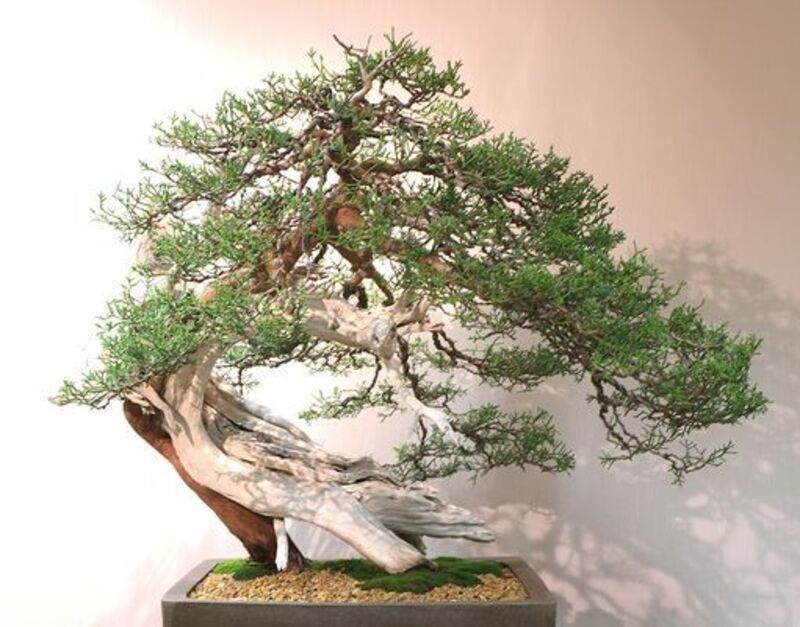
How to Care for and Maintain a California Juniper Bonsai
Caring for and maintaining a California Juniper Bonsai (Juniperus californica) is crucial to ensuring its health, vitality, and longevity. Here are some essential care tips to help you keep your California Juniper Bonsai thriving:
- Sunlight: Place your juniper bonsai in a location that receives ample sunlight. California junipers thrive in bright, sunny conditions. Aim for at least 6 hours of direct sunlight per day. If growing indoors, consider providing supplemental lighting with fluorescent or LED grow lights.
- Watering: Proper watering is crucial for the health of your California Juniper Bonsai. Water the bonsai thoroughly when the top inch of soil feels slightly dry. Ensure that excess water drains freely from the drainage holes of the bonsai pot to prevent waterlogging. Avoid overwatering, as it can lead to root rot.
- Soil and Drainage: California Juniper Bonsai prefer well-draining soil to prevent waterlogged roots. Use a well-balanced bonsai soil mix that allows for good airflow and drainage. A mix of organic and inorganic materials such as akadama, pumice, and lava rock works well.
- Fertilization: Feed your California Juniper Bonsai with a balanced, slow-release bonsai fertilizer during the growing season (spring to autumn). Follow the manufacturer’s instructions for application rates. Avoid fertilizing during the winter or when the tree is dormant.
- Trimming: Regular trimming are necessary to maintain the shape and health of your bonsai. Remove any dead, damaged, or unwanted branches. Trim excessive foliage to maintain airflow and promote sunlight penetration to the inner branches.
- Wiring: Wiring can be used to shape and position the branches of your California Juniper Bonsai. Apply the wire carefully to avoid damaging the branches. Remove the wire before it starts to cut into the bark, typically after a few months.
- Pests and Diseases: Keep an eye out for spider mites, aphids, and scale insects on your tree. If you find an invasion, you can control it by using things like insecticidal soap or neem oil. Keep an eye out for diseases like root rot and fungus infections, and if you see any, move quickly.
- Winter Care: Protect your California Juniper Bonsai from freezing temperatures during the winter. If kept outdoors, consider providing winter protection by placing the bonsai in a sheltered area or using a cold frame. Insulate the pot with mulch or wrap the tree with burlap to prevent cold damage.
- Regular Inspections: Check your bonsai every now and then for signs of stress, pests, or diseases. Check the leaves, stems, and roots to see how healthy they are. Take care of any problems right away so they don’t get worse or spread and hurt the tree more.
- Patience and Observation: Remember that bonsai cultivation is a long-term commitment. Observe and learn from your California Juniper Bonsai as it develops and grows. Be patient with its progress and make adjustments as needed to ensure its well-being.
By giving your California Juniper Bonsai the right care and attention as described above, you can enjoy it for many years to come. It will add beauty and peace to your bonsai collection.
California Juniper Bonsai Care sheet
| Aspect | Care Tips |
| Watering | Water thoroughly when the top inch of soil feels slightly dry. Ensure good drainage and avoid overwatering to prevent root rot. |
| Sunlight | Place in a location that receives at least 6 hours of direct sunlight per day. Provide supplemental lighting if growing indoors. |
| Temperature | Thrives in moderate temperatures between 50°F to 80°F (10°C to 27°C). Protect from extreme cold or frost during winter. |
| Humidity | Prefers average to low humidity levels. Avoid excessively dry conditions by occasional misting or using a humidity tray. |
| Fertilization | Feed with a balanced, slow-release bonsai fertilizer during the growing season. Avoid fertilizing during winter or dormancy. |
| Pruning and Trimming | Regularly prune and trim to maintain shape and health. Remove dead, damaged, or unwanted branches. Promote airflow and sunlight. |
| Wiring and Styling | Use wiring to shape and position branches. Apply carefully to avoid damaging the tree. Remove wire after a few months to prevent cutting. |
| Repotting | Repot every 2-3 years to refresh the soil and maintain root health. Prune back roots during repotting to balance with foliage growth. |
| Pest and Disease Control | Monitor for pests like spider mites and aphids. Use appropriate insecticides or organic controls if necessary. Address diseases promptly. |
| Winter Care | Protect from freezing temperatures. Provide winter protection by placing in a sheltered area or using insulation. |
| Regular Maintenance | Regularly inspect for stress, pests, or diseases. Maintain cleanliness and monitor overall health. Adjust care as needed. |
Remember that individual care requirements may vary based on factors like climate, tree size, and local conditions. Adjust your care routine accordingly, and always observe the specific needs of your California Juniper Bonsai for optimal growth and health.
Conclusion
California juniper bonsai is a captivating species that offers bonsai enthusiasts a unique and rewarding gardening experience. By understanding the specific needs of these trees, such as well-draining soil, adequate sunlight, and proper watering, you can create a thriving bonsai. With careful styling techniques like pruning, wiring, and the artistic use of jin and shari, you can shape your California juniper bonsai into a stunning masterpiece. So, why not embark on this bonsai journey and explore the beauty of California juniper bonsai for yourself? Happy bonsai cultivation!
FAQ
Q: What is a California Juniper Bonsai?
A: A California Juniper Bonsai (Juniperus californica) is a small, artfully pruned tree that is cultivated and trained in the bonsai style. It is a species of juniper native to California, known for its rugged appearance and twisted branches.
Q: How tall does a California Juniper Bonsai grow?
A: The height of a California Juniper Bonsai can vary depending on the tree’s age and design. They are normally 10 inches to 36 inches (25 cm to 91 cm) tall.
Q: Can California Juniper Bonsai be kept indoors?
A: While California Juniper Bonsai prefer ample sunlight, they can be kept indoors as long as they receive adequate light. Placing them near a bright window or using supplemental lighting can help meet their light requirements.
Q: How long does it take for a California Juniper Bonsai to mature?
A: The time it takes for a California Juniper Bonsai to grow is determined by several factors, including its original size and intended style. It might take years, if not decades, to reach the appropriate maturity and aesthetic appeal.
Q: How often should I water a California Juniper Bonsai?
A: Water your California Juniper Bonsai when the top inch of soil feels slightly dry. The frequency may vary depending on environmental conditions, so it’s best to check the soil moisture regularly.
Q: Do I need to wire the branches of a California Juniper Bonsai?
A: Wiring can be used to shape and position the branches of a California Juniper Bonsai. It helps create the desired artistic form. Care must be taken when wiring to avoid damaging the branches.
Q: When should I fertilize a California Juniper Bonsai?
A: Fertilize your California Juniper Bonsai during the growing season, which is typically from spring to autumn. Use a balanced, slow-release bonsai fertilizer and follow the instructions for application rates.
Q: How often should I prune a California Juniper Bonsai?
A: Pruning is required on a regular basis to keep a California Juniper Bonsai in form and health. Minor pruning can be done all year, but extensive shaping should be done when the tree is dormant in late winter or early spring.
Q: Can I collect a California Juniper from the wild for bonsai cultivation?
A: Collecting a California Juniper from the wild requires permission and adherence to local regulations. It’s essential to ensure ethical and sustainable practices when collecting trees and to consult with experienced collectors or professionals for guidance.
Q: What are some common pests and diseases that can affect a California Juniper Bonsai?
A: Common pests that can affect a California Juniper Bonsai include spider mites, aphids, and scale insects. Fungal diseases such as root rot can also be a concern. Regular inspection and prompt action can help control these issues.
Also Read:


